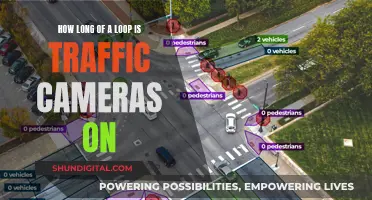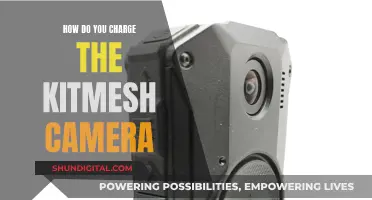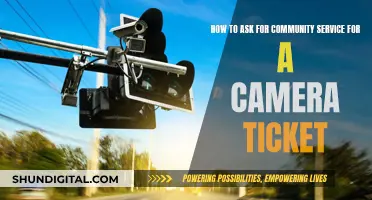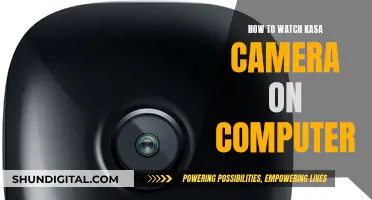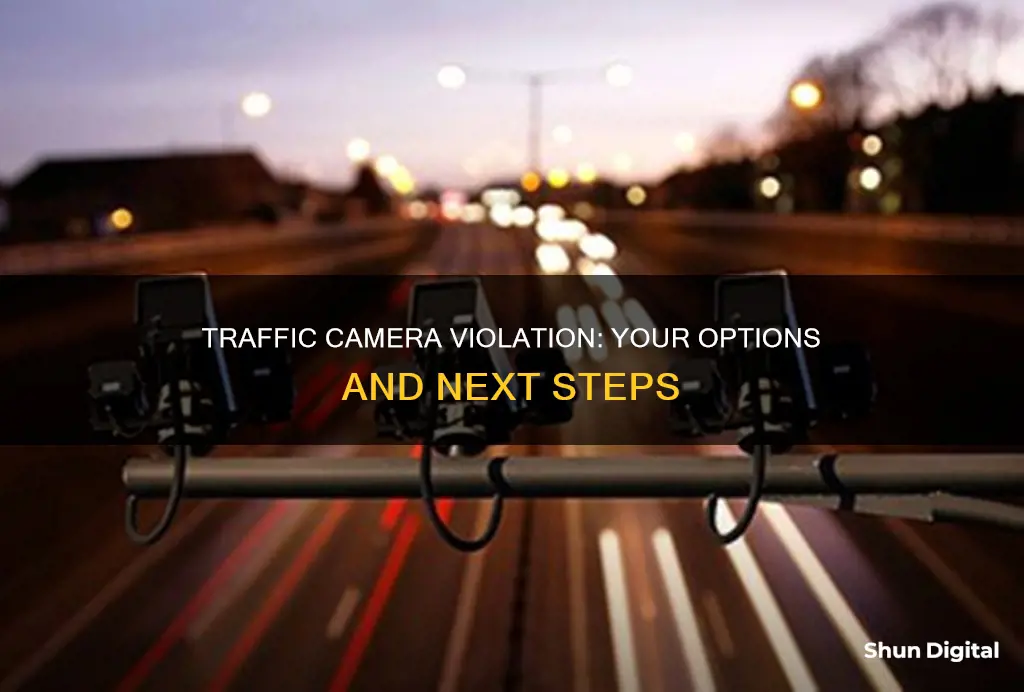
Traffic camera violations can be a stressful experience, but there are steps you can take to dispute the ticket and potentially get it dismissed. Firstly, examine your ticket and the associated photos or videos. Check the date, time, and location, and confirm whether you were actually driving the car when the ticket was issued. If someone else was driving, you may not be liable. Review the photos and videos for clarity—a blurry photo that doesn't clearly show your license plate or your face may be grounds for dismissal. Additionally, check if there are any signs of a violation. If the ticket was issued due to a red light violation, confirm whether there were signs indicating the presence of red light cameras.
Another important aspect is understanding the applicable laws and penalties. Research the specific code section you're cited for violating and the associated penalties. Some states treat red-light camera tickets like parking violations, holding the registered owner liable, while others focus on the driver. Knowing the specific laws and defences can help you build a strong case.
If you intend to dispute the ticket, it's crucial to plead not guilty by the deadline, which is typically around 30 days. You may be able to do this by mail, online, or by appearing at an arraignment. Request a formal hearing and gather any evidence, such as maintenance records for the camera system, to support your case. Remember that the prosecution has the burden of proof, so focus on highlighting any gaps or inconsistencies in their evidence.
| Characteristics | Values |
|---|---|
| Check ticket details | Check the date, time, and location of the ticket. Make sure you were driving the car when the ticket was issued. |
| Review photos and videos | Request and review the photos and videos of the incident. |
| Submit an affidavit | If you weren't driving, submit an affidavit to provide the name and address of the person who was driving. |
| Check yellow light interval | Time the yellow light interval to ensure it meets the required minimum time. |
| Check warning signs | Ensure there is a warning sign posted within 200 feet of the intersection. |
| Check camera maintenance | Request information on the maintenance of the camera system to ensure it was calibrated and inspected regularly. |
| Plead not guilty | Enter a plea of "not guilty" at arraignment and present your case and evidence in court. |
| Pay citation fee | Pay your citation fee as a deposit to the court, if required. |
| Appeal decision | Consult an attorney and file an appeal if you're dissatisfied with the court's decision. |
What You'll Learn

Check the ticket details: date, time, location, and vehicle registration
When you receive a traffic camera violation, it's important to carefully check the details of the ticket, including the date, time, location, and vehicle registration. Here are some steps to guide you through this process:
- Date and Time: Confirm the date and time of the alleged violation. This information is crucial as it allows you to recall your whereabouts and actions during that specific moment. It also helps you determine if you were indeed driving the vehicle when the ticket was issued.
- Location: Verify the location specified on the ticket. This information should include the address or intersection where the traffic camera violation allegedly occurred. Knowing the exact location can assist you in reviewing the circumstances of the incident and checking for any discrepancies.
- Vehicle Registration: Check the vehicle registration details on the ticket. Ensure that the license plate number, make and model, and colour of the vehicle match those of your car. This step is important because, in some cases, mistakes can occur, and you may be wrongly accused due to similar vehicle characteristics.
- Review Your Schedule: Think about your schedule and activities during the date and time specified on the ticket. This reflection can help you remember if you were driving the vehicle or if someone else was borrowing it. It is essential to be honest about this, as providing false information can have legal consequences.
- Affidavit for Non-Driving: If you were not the driver at the time of the violation, many jurisdictions allow you to submit an affidavit stating that you were not operating the vehicle. This process helps to shift responsibility away from you and may result in the dismissal of the ticket. However, be aware that providing false information on the affidavit can have legal repercussions.
- Request Additional Information: If necessary, contact the relevant law enforcement agency to request further details about the violation. This may include requesting additional photos or videos of the incident or maintenance records of the traffic camera system. This step can provide you with more comprehensive information to assess the situation and build your case.
Camera Battery Radioactivity: What's the Truth?
You may want to see also

Review the violation code and associated penalties
When you receive a traffic camera violation, the first thing you should do is review the violation code and associated penalties. This will help you understand the specific charge against you and the potential consequences. Here are some detailed steps to guide you through the process:
Understand the Violation Code:
Check your ticket for the exact code section you're cited for violating. Read and understand the law, including its elements and the penalties for violation. Ensure that the penalties listed on your ticket match those specified in the code section. It's important to note that the prosecution has the burden of proving each element of your violation, so make sure you don't take on the responsibility to prove your innocence.
Review the Associated Penalties:
Different jurisdictions may have varying penalties for the same violation. Familiarize yourself with the penalties associated with your specific violation code. These penalties may include fines, demerit points on your driver's license, license suspension, or other consequences. For example, in some states, a red-light camera violation may result in a fine ranging from $75 to $400, while in other states, the fine may be lower and no demerit points may be assessed. Understanding the potential penalties will help you assess the seriousness of the violation and determine your next course of action.
Know Your Rights:
It's important to know your rights as a vehicle owner or driver. In most states, it is the driver, not the vehicle owner, who is liable for the violation. This means that if someone else was borrowing your car when the violation occurred, you may not be prosecuted. Additionally, some states allow owners who receive tickets to submit an affidavit stating they were not driving, which can result in the dismissal of the ticket. Understanding your rights will help you build a stronger case for disputing the violation.
Review the Evidence:
If your notification includes photos or videos, carefully review them to confirm that it is indeed your vehicle in the footage and that the footage is clear and identifiable. Blurry or inconclusive evidence may work in your favour. Additionally, if there is no clear proof that you were driving, this can be a strong defence, especially in jurisdictions that require tickets to follow the driver rather than the registered owner of the vehicle.
Research Applicable Laws:
Familiarize yourself with the laws and regulations specific to your city or county regarding traffic cameras. Look for any appellate court decisions that have ruled on the legality of traffic camera tickets in your area. There may be recognised defences beyond the camera evidence, such as requirements for warning signs or specific rules about where cameras can be placed. Knowing the applicable laws will help you build a stronger case.
By thoroughly reviewing the violation code, associated penalties, and relevant evidence, you can gain a clear understanding of your situation and make informed decisions about how to respond to the traffic camera violation. Remember to always stay informed about your rights and the laws in your jurisdiction.
Are School Computers Spying Through Their Cameras?
You may want to see also

Examine the photo/video evidence for clarity and validity
When you receive a traffic camera ticket, you should be sent photos or a video of the violation, along with a web address to view the footage. It is important to review this evidence carefully, as it may be your best defence.
Firstly, check that the media clearly shows your car. If the photo is blurry, or the license plate is not visible, it may be difficult to prove that the car is yours. Similarly, if there is no clear photo or video of you in the driver's seat, the prosecution may not be able to prove that you were driving.
Next, check that the media clearly shows a violation. For example, if you were making a legal right turn on a red light, this should be visible in the media. If the media does not show a violation, you may be able to get the ticket dismissed.
Finally, check the maintenance records for the camera, and the traffic light or speed monitoring system. If the equipment was not regularly monitored and maintained, or its accuracy was not recently tested, the photo or video may be unreliable as evidence.
Focusing on Cameras: Which Models Nail Sharp Images?
You may want to see also

Plead not guilty and request a formal hearing
If you want to dispute a traffic camera ticket, you must plead not guilty and request a formal hearing. You can do this by mail, online, or in person. Pleading not guilty is common at the start of a case, as it is hard to change a guilty plea later in the proceedings. It is also recommended that people plead not guilty until they have a lawyer.
If you are the owner of the car but not the driver when the violation occurred, you can submit an affidavit swearing that you were not driving. This will generally result in the dismissal of the ticket.
You can also request a trial by written declaration, which allows you to contest a citation in writing without appearing in court. This is only available for cases involving infraction violations of the Vehicle Code, excluding alcohol, drugs, and certain other violations.
- Check the deadline to dispute the ticket, which is typically around 30 days.
- Plead not guilty by mail, online, or in person before the deadline.
- If you plead by mail or online, you may need to submit a request form indicating that you intend to plead not guilty and request a formal hearing.
- If you plead in person, appear at the arraignment or first appearance listed on your citation and plead not guilty.
- Request a formal hearing or trial at the arraignment.
- You may be required to attend other hearings, such as pre-trial hearings or mediation, before the formal hearing.
- Attend any required hearings and maintain your not guilty plea.
Traffic Cameras: All-Seeing Eyes or Not?
You may want to see also

Research applicable laws and previous cases to build a defence
If you've received a traffic camera ticket, the first thing to do is to examine the ticket and any photos that came with it. Check the date, time, and location, and confirm whether you or someone else was driving the car. Then, look up the relevant traffic laws and penalties for your violation. Understand your rights and the burden of proof required in your jurisdiction.
If you decide to dispute the ticket, you'll need to plead not guilty by mail, online, or in person at an arraignment. You'll then need to request a formal hearing, which may include additional steps such as pre-trial hearings or mediation.
To build a defence, research applicable laws and previous cases involving traffic cameras in your city or county. Look for specific defences related to the circumstances of your case. For example, some states have rules about warning signs for traffic cameras or recognise a necessity defence for speeding. You can also review maintenance records for the camera to establish its accuracy.
Additionally, you can challenge the admissibility of the photograph as hearsay or assert your right to confront witnesses, as guaranteed by the Sixth Amendment. If no one from the company that maintains the camera testifies, you can object to the use of the photographs due to lack of foundation.
Surveillance Camera Resolution: 1080p vs 4K Clarity
You may want to see also
Frequently asked questions
It depends on the state. In some states, you can ignore it without penalty, while in others, you may have to pay a fine.
You can either pay the fine or dispute the ticket. If you choose to dispute it, you'll need to examine the ticket, plead not guilty, and build a defence.
One common defence is that the registered owner of the vehicle wasn't driving at the time of the violation. Another defence is that the photos and videos don't clearly show a violation. Additionally, if there were no warning signs about red-light cameras at the intersection, this could be a valid defence.
Penalties vary by state. In some states, the penalties are the same as for any other red-light violation, including fines and demerit points. In other states, the fines for camera violations are much lower, and these tickets typically don't result in demerit points.
If you receive a ticket but weren't driving, you may be able to submit an affidavit stating that you weren't the driver. This could result in the dismissal of the ticket, depending on the state laws where the violation occurred.


